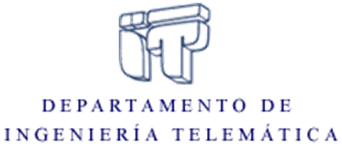Room 4. 1F03, Telematics Department, Torres Quevedo Building, University Carlos III of Madrid, Avda. Universidad, 30, 28911 Leganes – Madrid
 TREBOL: Tree-Based Routing and Address Autoconfiguration for Vehicle-to-Internet Communications
TREBOL: Tree-Based Routing and Address Autoconfiguration for Vehicle-to-Internet Communications
Efficient vehicle-to-Internet routing and address autoconfiguration are two of the missing pieces required to provide Internet connectivity from vehicles. Here, we propose TREBOL, a tree-based and configurable protocol which benefits from the inherent tree-shaped nature of vehicle to Internet traffic to reduce the signaling overhead while dealing efficiently with the vehicular dynamics. The paper describes the design and rationale of the solution, and presents the results of an experimental validation and performance evaluation, based on extensive simulations and real vehicular traces obtained in the region of Madrid.
New Insights from the Analysis of Free Flow Vehicular Traffic in Highways abstract:
Building vehicular networks in roads and highways is a challenging research topic with a large number of applications ranging from the prevention of traffic jams and car collisions to efficient route planning. Analyzing the distance between vehicles in roads is a key factor in, e.g., designing vehicular networks protocols or planning a supporting infrastructure to improve connectivity.
This work proposes a Gaussian-exponential mixture model to characterize the time distance between vehicles in a highway lane, based on measurements collected at different locations in several highways of the city of Madrid.
The model arises from the observed behavior that some vehicles travel very close together, like in a burst mode, showing Gaussian inter-arrival times, while other vehicles are isolated, showing exponentially distributed inter-arrival times.
The experiments show that such a Gaussian-exponential mixture model accurately characterizes inter-vehicle times as observed from real traces.
The conference will be conducted in English

